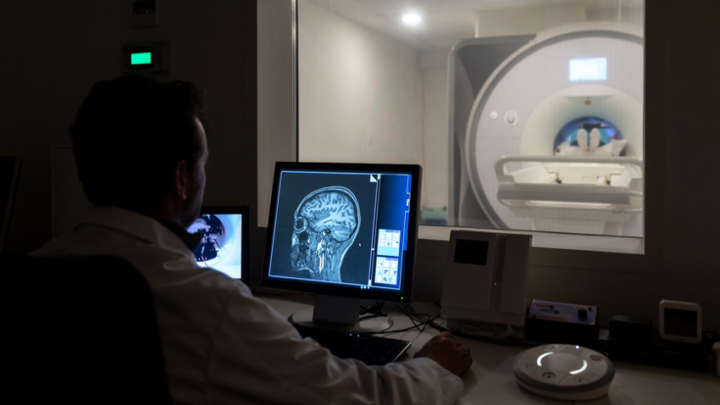
The medical landscape is experiencing a paradigm shift: physicians are embracing an approach that targets the fundamental processes of aging itself. Longevity medicine represents more than just another medical specialty—it’s a comprehensive framework for extending both lifespan (the number of years a person lives) and healthspan (the number of years lived in good health) through evidence-based interventions. Rather than waiting for chronic conditions to develop, healthcare providers are exploring intervening at the cellular and molecular level, addressing the root causes of age-related decline before symptoms appear.
As a plastic surgeon on Sermo says, “I believe the more we understand the aging process the more we can improve the quality of our lives.”
The proactive approach is gaining momentum among healthcare trends as our understanding of aging biology deepens and new therapeutic modalities emerge. From senolytic drugs that clear damaged cells to personalized genetic interventions, the tools available to longevity-focused physicians are expanding rapidly. The question isn’t whether longevity medicine will reshape healthcare—it’s how quickly physicians can adapt their practice to harness these powerful new capabilities.
For readers interested in a deeper exploration of this rapidly evolving field, Eric Topol’s work offers invaluable insights. As a physician, researcher, and thought leader, he has written extensively on how cutting-edge science and technology are transforming healthcare—including the emerging practice of longevity medicine.
What is longevity medicine?
Longevity medicine is a proactive, evidence-based medical approach that focuses on extending both healthspan and lifespan by addressing the fundamental biological processes of aging. The aim is to prevent age-related decline at its source rather than treating diseases after they become known.
Longevity medicine integrates multiple scientific disciplines to create personalized treatment strategies.
- Genetics plays a foundational role, as physicians analyze patient DNA to identify predispositions to age-related diseases and determine optimal intervention strategies. Epigenetics adds another layer of precision, examining how environmental factors influence gene expression patterns throughout a patient’s lifetime.
- Biomarkers provide objective measures of biological age that often differ significantly from chronological age. These markers help physicians track the effectiveness of interventions and adjust treatment protocols in real-time. Advanced biomarker panels can assess everything from telomere length to inflammatory markers, creating a comprehensive picture of a patient’s biological aging trajectory.
- Senolytics represent one of the most promising therapeutic categories in longevity medicine. These drugs specifically target and eliminate senescent cells—aging, damaged cells that accumulate in tissues and contribute to inflammation and disease. By clearing these cellular “zombies,” senolytics can potentially reverse aspects of aging at the tissue level.
- Lifestyle interventions are crucial to longevity medicine. Rather than generic recommendations, physicians use genetic data, biomarker profiles and continuous monitoring to create highly personalized nutrition, exercise and stress management protocols.
The field also emphasizes preventative strategies that extend far beyond traditional wellness approaches. This might include targeted supplementation based on genetic polymorphisms, personalized hormone optimization, or advanced diagnostic screening that catches potential issues years before conventional medicine would detect them.

Why longevity medicine is crucial for future healthcare
Longevity medicine addresses some of the most pressing challenges facing modern healthcare systems worldwide. As populations age globally, the escalating burden of chronic diseases is creating unsustainable pressure on healthcare infrastructure and costs.
Consider the current trajectory. The World Health Organization projects that by 2050, the global population aged 60 and older will reach 2.1 billion people. Physicians in favor of longevity medicine argue that it would better accommodate this demographic shift. Longevity medicine offers shifting resources toward prevention and early intervention, potentially reducing the incidence of costly chronic conditions by decades.
A shift to longevity medicine could have significant economic implications. Chronic diseases and mental health conditions account for approximately 90% of healthcare spending in the U.S. By extending healthspan, longevity medicine could reduce these costs while improving quality of life for patients. The end goal is to add life to your years, and not just years to your life.
“it is amazing to see how some patients easily make it to 90 or 100, and others have great difficulties just getting through their days in their 60’s”, observes an internal medicine physician on Sermo.
The field also has the potential to address healthcare equity concerns. While current longevity interventions can be expensive, the long-term cost savings from preventing chronic diseases could make these approaches more accessible over time. Early investment in longevity medicine research and implementation could ultimately help to democratize healthy aging.
The Sermo community reveals growing physician awareness of these trends. When asked about familiarity with emerging trends in longevity medicine, doctors on Sermo increasingly recognize the field’s importance, though many still seek educational opportunities to fully understand its applications. In an internal poll of U.S-based physicians, only 7% said they were very familiar with longevity medicine, while 63% were somewhat or slightly familiar and 32% were not familiar at all.
Longevity medicine therapies
Lifespan modifications
As one emergency medicine physician on Sermo opines, “Processed food, sugar and inactivities are killing us”.
A majority of internally polled physicians on Sermo (76%) believe lifestyle modifications are the most promising intervention for expanding healthspan. Lifespan modification encompasses a broad category of interventions designed to extend both healthspan and lifespan through comprehensive lifestyle and pharmaceutical approaches. This includes personalized hormone optimization that targets age-related declines in testosterone and other key signaling molecules, although further research is needed to determine the exact effect of these hormones on aging-related conditions.
Advanced nutritional interventions use genetic testing to design personalized diets that optimize individual metabolic pathways. Exercise prescriptions are tailored based on genetic variants affecting muscle function and cardiovascular response. Sleep optimization protocols address age-related changes in circadian rhythms, while stress management techniques are personalized based on individual stress response genetics.
Stem cell therapy
Second to lifestyle modifications, 38% of polled physicians on Sermo think stem cell therapy is the most promising intervention for expanding healthspan. Stem cell therapy in longevity medicine focuses on regenerating aged tissues and restoring youthful cellular function. Mesenchymal stem cells (MSCs) are commonly used due to their safety profile and ability to differentiate into multiple cell types. The therapy can involve autologous cells (from the patient) or allogeneic cells (from donors). Recent advances include exosome therapy, which uses the signaling molecules produced by stem cells rather than the cells themselves. Possible clinical applications range from joint regeneration to cognitive enhancement, with ongoing research exploring systemic anti-aging effects through intravenous administration.
Caloric restriction mimetics
Caloric restriction mimetics aim to replicate the longevity benefits of caloric restriction without requiring patients to dramatically reduce food intake. These compounds activate the same cellular pathways that respond to caloric restriction, including sirtuins, AMP-activated protein kinase, and mTOR (mechanistic Target Of Rapamycin) signaling. Additionally, a range of other substances such as glycolytic inhibitors, blockers of carbohydrate and lipid absorption, polyamines, and polyphenols are being explored for their ability to regulate pathways involved in managing the impact of free radicals, which cause oxidative stress to cells.
Metformin, originally developed for diabetes, has emerged as a leading caloric restriction mimetic, though its exact effects on aging are still unclear. Compounds like rapamycin—which inhibit mTOR pathways—and NAD+ precursors are showing early potential in studies. These therapies work by optimizing cellular metabolism, improving insulin sensitivity, and enhancing cellular stress resistance mechanisms.
Gene editing
Gene editing technologies, particularly CRISPR-Cas9 systems, are an emerging therapy that is being adapted for longevity applications. Current approaches focus on correcting genetic variants associated with accelerated aging or enhanced disease susceptibility. Telomere extension through gene therapy has shown promise in preclinical studies, potentially reversing cellular aging markers.
Base editing and prime editing technologies offer more precise modifications with reduced off-target effects. While still largely experimental, some gene editing therapies for aging-related conditions are entering clinical trials. Gene editing accounted for 36% of physician responses as the most promising healthspan-boosting intervention in the Sermo poll.
Senolytics
Senolytic therapy represents a promising approach within longevity medicine, although several aspects of its application require further research and currently no senolytic therapies are approved for clinical use. These drugs work by selectively targeting senescent cells—aged, damaged cells that have stopped dividing but remain metabolically active, secreting inflammatory compounds that accelerate aging in surrounding tissues. Current senolytic drugs include dasatinib combined with quercetin, fisetin, and newer compounds like navitoclax.
Clinical trials have shown promising results in reducing markers of aging in older adults, though they may mostly benefit those with elevated senescence marker levels. The therapy typically involves intermittent dosing rather than continuous treatment, as the goal is to clear existing senescent cells without preventing normal cellular processes. Senolytics was the least popular response among physicians on Sermo with only 11% of votes.

Navigating barriers and ethical considerations in longevity medicine
The path forward for longevity medicine brings challenges. Regulatory frameworks will need to catch up with rapid technological advancement to avoid uncertainty around treatment protocols and reimbursement policies.
Insurance coverage can present another substantial barrier. While many healthcare systems cover standard preventive screenings—such as colonoscopies or mammograms—insurance is far more limited when it comes to longevity medicine. Because most policies are structured around diagnosing and treating existing conditions rather than intervening at the molecular or cellular level to delay disease onset, patients often face significant out-of-pocket costs for longevity-focused interventions. This creates a two-tiered system where economic status determines access to potentially life-extending treatments, raising equity concerns. As one physician on Sermo notes, “Living to 100 sounds appealing—if those years are healthy and meaningful. In Germany, wealth can quietly shape health outcomes, even within a strong healthcare system. Those with higher incomes often benefit from better preventive care, quicker access to specialists, and healthier lifestyles overall.”
Geographic distribution of longevity medicine expertise remains highly concentrated in urban areas and academic medical centers, leaving rural and underserved populations with limited access. The complexity of some interventions requires specialized facilities and trained personnel that may not be available in all healthcare settings.
Misinformation poses a significant threat to the field’s credibility and patient safety. The longevity medicine space attracts both legitimate scientific advancement and unsubstantiated claims from less scrupulous sources, such as those promoted by social media personalities.
Ethical considerations surrounding radical life extension raise questions about resource allocation and societal impact. If longevity medicine proves highly effective, society may need to adjust retirement ages, healthcare resource distribution and intergenerational equity.
Informed consent becomes more complex when dealing with interventions that may have effects lasting decades. Patients must understand not only immediate risks and benefits but also long-term implications that may not be fully understood given the field’s relative newness.
How physicians can pivot their careers towards longevity medicine
A pivot into longevity medicine requires strategic planning and continued education, but pathways are becoming increasingly well-defined as the field matures. Physicians from virtually any specialty can find relevant applications.
To embrace longevity medicine, you’ll need to understand aging biology at a molecular level. Courses in genetics, epigenetics, and cellular biology, particularly focusing on how these systems change with age, can help. Several universities now offer specialized longevity medicine programs, while online platforms provide flexible learning options for practicing physicians.
Certification programs are emerging as the field standardizes. For example, the American Academy of Anti-Aging Medicine (A4M) offers comprehensive certification. Programs typically combine didactic learning with hands-on clinical experience using longevity medicine protocols.
Medical conferences now regularly feature longevity medicine tracks, and specialized symposiums focus exclusively on aging research and clinical applications. Look for CME activities that provide practical, actionable knowledge rather than purely theoretical content.
As you make the transition, networking within the longevity medicine community can be helpful. Professional organizations like the International Longevity Alliance and physician communities like Sermo provide platforms for collaboration and knowledge sharing. Many physicians find mentorship through these networks, partnering with established longevity medicine practitioners to accelerate their learning.
Collaboration opportunities extend beyond traditional medical partnerships. Longevity medicine often involves working with researchers, biotech companies, and technology developers. These unique opportunities can allow you to build your expertise and help shape the field’s development.
The transition doesn’t require abandoning your current practice model entirely. You can incorporate longevity medicine principles into your existing patient care, gradually expanding your focus as you gain expertise and confidence.
Shaping the future of healthcare through longevity medicine
Longevity medicine’s rapid advancement offers opportunities for physicians to provide truly preventive care that addresses aging at its biological roots. The most effective interventions may combine pharmaceutical treatments, lifestyle modifications and emerging technologies in personalized protocols.
The evidence base supporting longevity medicine continues to expand rapidly. Physicians who engage with this evolving field position themselves at the forefront of medicine’s future while providing their patients with access to potentially transformative interventions.
The Sermo community provides an invaluable platform for physicians exploring longevity medicine to connect, collaborate and share insights. Through peer discussions, Sermo members can stay at the forefront of this rapidly evolving field while contributing to its advancement. Join the conversation and help shape the future of healthcare by connecting with colleagues who share your commitment to extending healthy human lifespan.















